
Practical Strategies for Minimizing Noise from Wall-Mounted Split Systems
A cost-effective solution to reduce noise from wall-mounted split systems is to use external sound barriers. By installing sound barriers such as acoustic panels or fences around the unit, the sound waves emitted from the system can be absorbed or re...
Read more →
Evaluating the Decibel Ratings of Wall-Mounted Split Systems
Upon examining customer reviews and feedback regarding wall-mounted split systems, it becomes evident that there is a mixed reception among users. While some customers praise the efficiency and cooling performance of these systems, others express con...
Read more →
Addressing Noise Concerns in Wall-Mounted Split System Installations
Unusual noises coming from your wall-mounted split system can be concerning and disruptive. When you notice any sounds that deviate from the normal operation of your unit, it is essential to promptly investigate the source of the issue. Clanking, ban...
Read more →
Impact of Noise Levels on the Comfort of Wall-Mounted Split Systems
Noise levels produced by wall-mounted split systems can have a significant impact on the quality of sleep and overall wellbeing of individuals. Studies have shown that exposure to high levels of noise during sleep can disrupt sleep patterns, leading ...
Read more →
Soundproofing Solutions for Wall-Mounted Split System Units
To effectively reduce the transmission of sound from a wall-mounted split system unit, incorporating sound-absorbing materials is crucial. One commonly used material for this purpose is fiberglass insulation. Fiberglass insulation is a highly effecti...
Read more →
Comparing Noise Levels of Different Wall-Mounted Split Systems
When considering the noise levels of wall-mounted split systems in residential settings, the decibel rating of the Carrier model stands out. Known for its efficient cooling capabilities, the Carrier Wall-Mounted Split System also excels in providing ...
Read more →
Managing Noise from Wall-Mounted Split Systems in Bedrooms
When it comes to managing noise from wall-mounted split systems in bedrooms, one crucial factor to consider is the noise rating of the units. Noise ratings are usually expressed in decibels (dB) and provide crucial information about how loud a unit w...
Read more →
Noise Reduction Techniques for Wall-Mounted Split Systems
One effective technique for reducing noise from wall-mounted split systems is the use of custom enclosures designed specifically for sound dampening. These enclosures are constructed to fit around the unit and are typically made from materials that a...
Read more →
Tips for Choosing a Low-Noise Wall-Mounted Split System
When selecting a low-noise wall-mounted split system, it is beneficial to review customer feedback to gain insights into the actual performance of the unit. By reading reviews from other customers, you can better assess the noise levels of the split ...
Read more →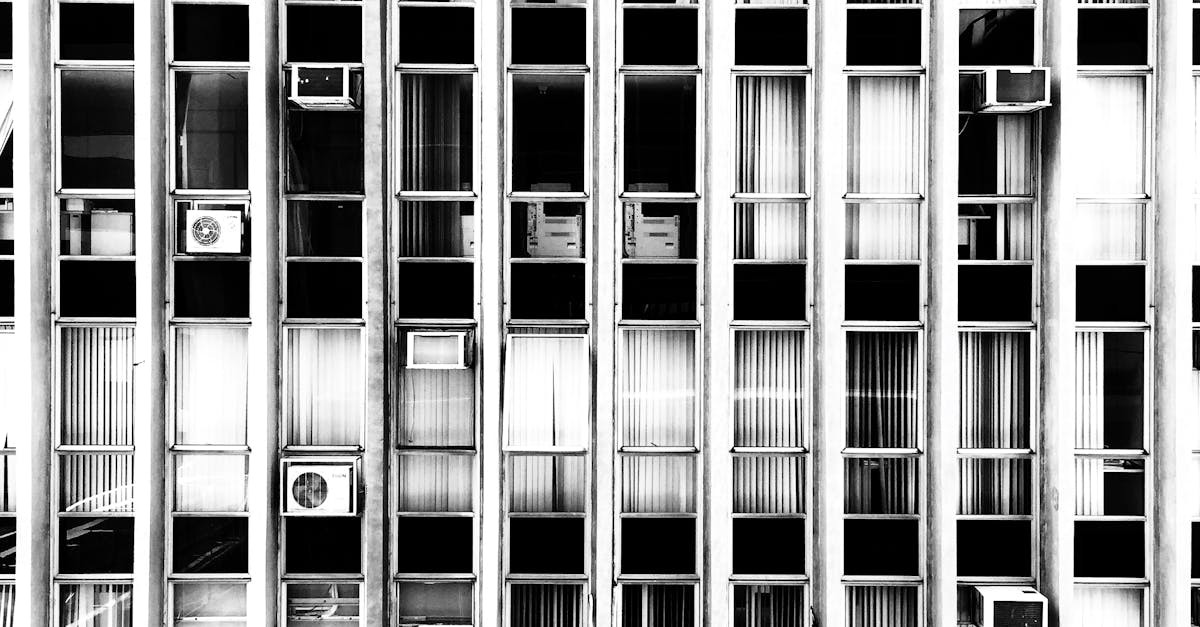
Understanding Noise Levels in Wall-Mounted Split Systems
To ensure an accurate understanding of noise levels in wall-mounted split systems, it is essential to conduct a comparative analysis among different brands. This analysis allows consumers to make informed decisions based on the noise performance of v...
Read more →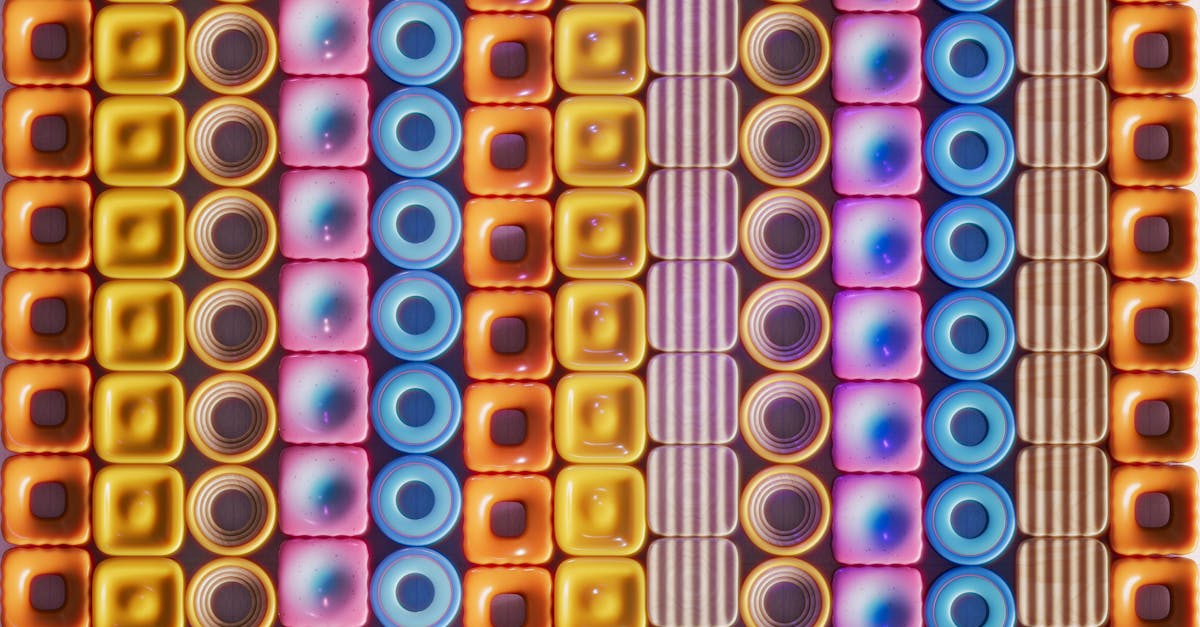
Room Size Compatibility for Wall-Mounted Split Systems in Australia
Installing an oversized split system in a small room can lead to a range of issues that can impact the overall efficiency and performance of the system. One of the main challenges is that the system may cool the room too quickly, causing it to cycle ...
Read more →
Adapting Wall-Mounted Split Systems to Various Room Sizes
Maintaining and servicing wall-mounted split systems is crucial to ensure optimal performance and longevity of the units. Regular maintenance practices such as cleaning or replacing filters, checking for any leaks in the refrigerant lines, and inspec...
Read more →
Selecting the Right Wall-Mounted Split System Based on Room Size
When selecting a wall-mounted split system for your space, it's essential to consider the additional features that different models offer. One key feature to look out for is the inclusion of a dehumidifier function, which can be particularly benefici...
Read more →
Evaluating Room Size for Wall-Mounted Split System Installation
It is always advisable to seek professional assistance when evaluating the appropriate room size for the installation of a wall-mounted split system. HVAC technicians have the expertise and experience to accurately assess the dimensions of the space ...
Read more →
Matching Wall-Mounted Split Systems to Room Dimensions
To optimise the efficiency of your wall-mounted split system, it is crucial to program the thermostat settings appropriately. Start by setting a comfortable temperature for when you are at home, typically between 18-21 degrees Celsius during the cool...
Read more →
Sizing Guidelines for Wall-Mounted Split Systems in Australian Homes
When it comes to sizing split systems for wall-mounted units in Australian homes, there are several common mistakes that should be avoided to ensure optimal performance and efficiency. One prevalent mistake is underestimating the cooling capacity nee...
Read more →
Room Size Considerations for Optimal Performance of Split Systems
Insulation and sealing are crucial aspects to consider for achieving optimal energy efficiency in split systems. In Australian homes, where temperatures can fluctuate significantly, proper insulation helps in maintaining a comfortable indoor environm...
Read more →
Understanding the Warranty and Maintenance Requirements for Wall-mounted Split Systems
When considering the purchase of a wall-mounted split system, it is important to explore the extended warranty options available for added protection and peace of mind. Extended warranties provide coverage beyond the standard manufacturer's warranty,...
Read more →
Determining the Ideal Room Size for Wall-Mounted Split Systems
When determining the appropriate mounting height for a wall-mounted split system, it is crucial to consider both functionality and aesthetics. The height at which the unit is installed significantly impacts the air distribution and overall cooling or...
Read more →
Understanding the Impact of Room Size on Cooling Efficiency
Room size plays a significant role in determining the efficiency of cooling within a space. The proportions of a room directly impact the circulation of air and the distribution of cool air throughout the area. In larger rooms, the challenge lies in ...
Read more →
Ensuring Optimal Performance through Regular Maintenance of Wall-mounted Split Systems
Proper airflow and ventilation are essential for the efficient operation of wall-mounted split systems. Without adequate airflow, the system may struggle to reach the desired temperature, leading to increased energy consumption and potential componen...
Read more →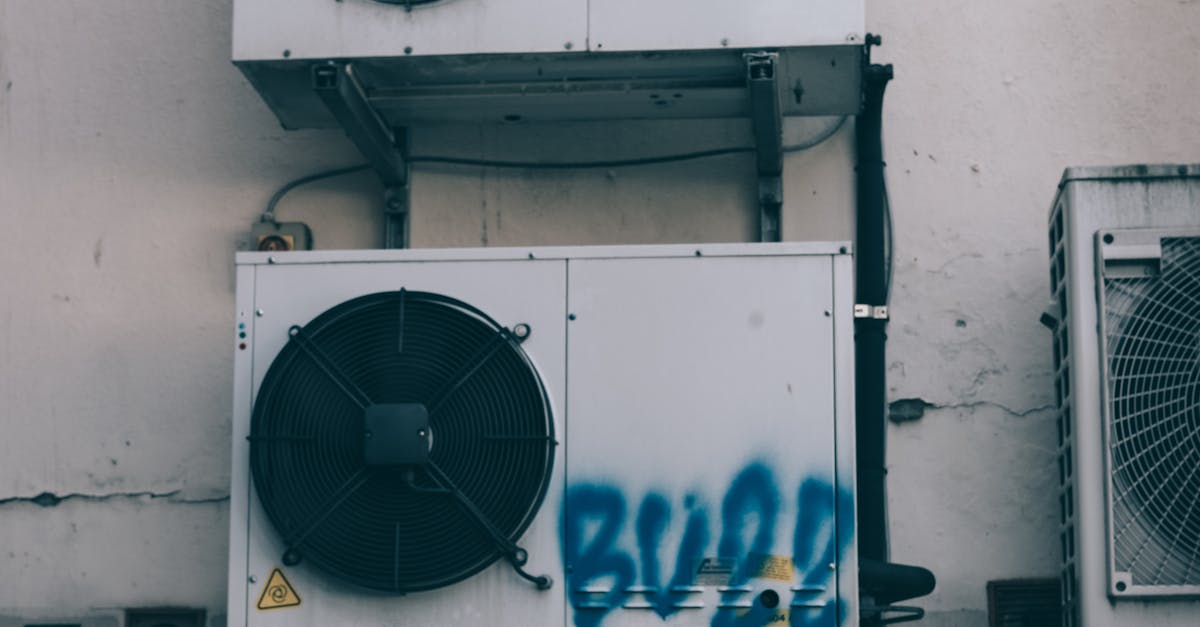
Calculating Cooling Capacity for Different Room Sizes
When planning cooling systems for multiple connected rooms, it is essential to consider the layout and airflow within the space. Ensure that there are no obstacles blocking air vents or returns to allow for efficient circulation throughout the interc...
Read more →
The Role of Filters in the Maintenance of Wall-mounted Split Systems
Many homeowners make the mistake of neglecting to clean or replace the filters in their wall-mounted split systems regularly. This oversight can lead to a build-up of dirt, dust, and other particles, which can obstruct airflow and reduce the system's...
Read more →
Troubleshooting Maintenance Problems in Wall-mounted Split Systems
To properly troubleshoot maintenance problems in wall-mounted split systems, one crucial area to inspect is the electrical connections. Over time, these connections can become loose or corroded, leading to various issues within the system. It is esse...
Read more →
Extending the Lifespan of Wall-mounted Split Systems through Maintenance
When maintaining wall-mounted split systems, it is crucial to regularly inspect the electrical connections and wiring. Exposed or damaged wires can lead to safety hazards and potentially cause the system to malfunction. By checking these components r...
Read more →
Seasonal Maintenance Checklist for Wall-mounted Split Systems
To ensure optimal performance of your wall-mounted split systems during the hot summer months, it is crucial to conduct a thorough tune-up. Start by clearing the condensate drain of any debris or blockages to prevent potential drainage issues that co...
Read more →
Common Maintenance Issues with Wall-mounted Split Systems
One common maintenance issue that can arise with wall-mounted split systems is drainage problems. If the condensate drains become clogged, water may start to accumulate, leading to potential leaks or water damage. To address this issue, it is importa...
Read more →
Professional Servicing for Wall-mounted Split Systems
To ensure that your wall-mounted split system receives the best care, it is essential to choose the right service provider. When selecting a professional servicing company, look for qualifications and experience as key indicators of their expertise i...
Read more →
DIY Maintenance Tips for Wall-mounted Split Systems
When it comes to maintaining your wall-mounted split system, one crucial task that should not be overlooked is lubricating the moving parts. Proper lubrication helps reduce friction and wear on components, ensuring smooth operation and extending the ...
Read more →
Importance of Regular Maintenance for Wall-mounted Split Systems
One crucial aspect of regular maintenance for wall-mounted split systems is ensuring that all electrical connections are properly tightened. Loose connections can lead to electrical issues such as power surges and short circuits, which can be dangero...
Read more →
Assessing the Long-term Energy Efficiency Benefits of Wall-mounted Split Systems
When considering wall-mounted split systems, one crucial aspect to take into account is their lifespan. These systems are designed to operate efficiently for an extended period, but their longevity can be influenced by various factors. Proper mainten...
Read more →
The Role of Insulation in Maximizing Energy Efficiency in Wall-mounted Split Systems
To ensure long-term efficiency of wall-mounted split systems, maintaining proper insulation is crucial. Insulation plays a significant role in preventing heat loss or gain, ultimately impacting the system's energy consumption. Regular checks should b...
Read more →
Strategies for Maintaining High Energy Efficiency in Wall-mounted Split Systems
Monitoring energy consumption is a crucial aspect of maintaining high energy efficiency in wall-mounted split systems. By keeping a close eye on how much energy your system is using, you can identify any unusual spikes or patterns that may indicate i...
Read more →
Optimizing Energy Efficiency in Wall-mounted Split Systems for Australian Climates
Renewable energy sources have the potential to significantly improve the energy efficiency of wall-mounted split systems in Australia's diverse climates. By harnessing the power of solar panels, these systems can operate more sustainably and cost-eff...
Read more →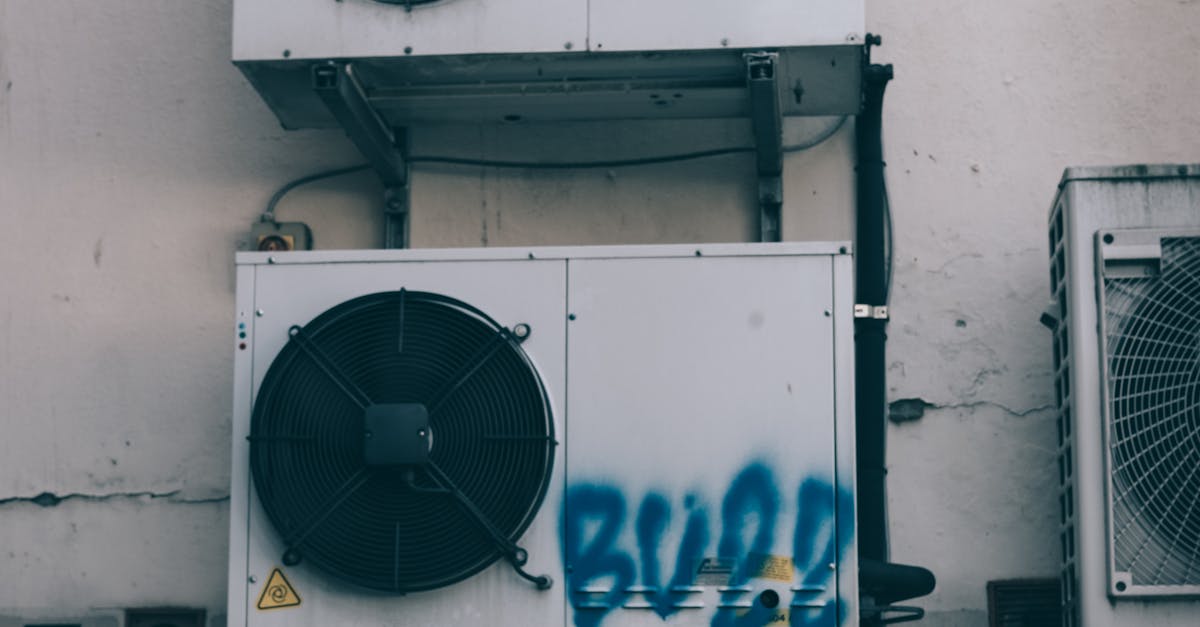
Exploring the Impact of Energy Efficiency on Wall-mounted Split System Performance
Correct sizing of wall-mounted split systems is a crucial factor in achieving optimal energy efficiency and performance. When selecting a unit, it is essential to consider the size of the space it will be cooling or heating. A system that is too larg...
Read more →
Energy-Saving Features to Look for in Wall-mounted Split Systems
When considering wall-mounted split systems for your home or office, one essential feature to look for is quiet operation. It is crucial to select a unit that operates with minimal noise levels to ensure a peaceful and comfortable environment. Noisy ...
Read more →
Factors Affecting Energy Efficiency in Wall-mounted Split Systems
The placement of the indoor unit in wall-mounted split systems plays a crucial role in ensuring optimal cooling efficiency. It is recommended to install the indoor unit at a height of around 7-8 feet above the floor level. This height allows for bett...
Read more →
Comparing Energy Efficiency of Different Wall-mounted Split Systems
Regular maintenance is essential to ensure the optimal performance and energy efficiency of wall-mounted split systems. Neglecting routine maintenance can lead to reduced efficiency, increased energy consumption, and potential breakdowns. By staying ...
Read more →
Tips for Improving Energy Efficiency in Wall-mounted Split Systems
Investing in energy-efficient models for wall-mounted split systems is crucial for reducing electricity consumption and lowering utility bills. When selecting a new unit, look for models with a high energy star rating, as these are designed to operat...
Read more →
Understanding Energy Efficiency Ratings for Wall-mounted Split Systems
When it comes to understanding energy efficiency ratings for wall-mounted split systems, there are several common misconceptions that consumers often believe. One prevalent misconception is that a higher price tag always equates to better energy effi...
Read more →
Testing and Commissioning the Wall-Mounted Split System Installation
Performance testing is a crucial step in ensuring the effectiveness and efficiency of a wall-mounted split system installation. This testing is carried out to evaluate the system's ability to maintain the desired temperature in the room while operati...
Read more →
Ensuring Proper Drainage in Wall-Mounted Split System Installation
To enhance drainage efficiency in wall-mounted split system installations, it is imperative to ensure that the condensate drainage system is optimally designed. Adequate slope should be incorporated into the system to facilitate the smooth flow of wa...
Read more →
Final Checks and Adjustments in Wall-Mounted Split System Installation
Testing thermostat functionality is a critical step in ensuring the proper operation of a wall-mounted split system. Begin by setting the thermostat to the desired temperature and waiting for the unit to kick in. Listen for the sound of the compresso...
Read more →
Safety Considerations during Wall-Mounted Split System Installation
Refrigerant handling and leak prevention are crucial aspects of wall-mounted split system installation to ensure the safety of both the system and the environment. Proper procedures must be followed to handle refrigerant safely and prevent any leaks ...
Read more →
Securing the Outdoor Unit in Wall-Mounted Split System Installation
Regular maintenance is crucial in ensuring the efficient operation and longevity of a wall-mounted split system outdoor unit. By staying proactive with regular upkeep, homeowners can prevent potential damage and costly repairs down the line. One key ...
Read more →
Connecting the Refrigerant Lines during Wall-Mounted Split System Installation
When connecting the refrigerant lines during the installation of a wall-mounted split system, it is crucial to ensure that the connections are properly sealed and insulated. This step is essential for maintaining the efficiency and effectiveness of t...
Read more →
The Importance of Proper Insulation during Wall-Mounted Split System Installation
When selecting insulation materials for a wall-mounted split system setup, it is crucial to consider the R-value of the material. The R-value refers to the material's ability to resist heat flow, with a higher value indicating better insulation prope...
Read more →
Steps for Mounting the Indoor Unit in Wall-Mounted Split System Installation
To ensure a secure placement of the indoor unit in a wall-mounted split system installation, the first step involves mounting the bracket onto the wall. It is crucial to select a suitable location for the bracket, considering factors such as wall str...
Read more →
Choosing the Right Location for Wall-Mounted Split System Installation
Wall-mounted split system air conditioners are known for their efficiency in cooling indoor spaces. However, they can sometimes produce noise that may be bothersome for occupants. To address this issue, there are several noise reduction strategies th...
Read more →
Understanding the Electrical Requirements for Wall-Mounted Split System Installation
Grounding and bonding are two critical principles in the setup of wall-mounted split systems. Grounding involves connecting electrical systems to the earth's conductive surface to prevent voltage overload and potential shock hazards. It ensures that ...
Read more →
Exploring the Advantages and Disadvantages of Ducted Split Systems
Ducted split systems are a versatile HVAC solution suitable for a range of spaces, including large residential homes, commercial buildings, and offices. The system's layout consists of an outdoor compressor unit connected to an indoor unit via ductwo...
Read more →
The Good and the Bad of Ducted Split Systems
One common drawback of ducted split systems is the potential noise levels produced during operation. The outdoor unit can generate enough noise to be a nuisance, especially if the unit is located near bedrooms or outdoor living areas. Despite efforts...
Read more →
Understanding the Advantages and Disadvantages of Ducted Split Systems
One significant drawback of ducted split systems is the issue of noise levels. These systems can be quite noisy compared to other types of air conditioning units, especially older models. The noise can be disruptive and bothersome, particularly when ...
Read more →
Ducted Split Systems: Weighing the Pros and Cons
When considering the installation of ducted split systems in your home, one can't ignore the impact they have on the overall aesthetic appeal. These systems blend seamlessly into your space, offering a discreet and unobtrusive cooling and heating sol...
Read more →
Ducted Split Systems: The Upsides and Downsides
When it comes to ducted split systems, noise levels can be a key consideration for homeowners. These systems are typically designed to operate quietly, ensuring minimal disruption to daily activities and a peaceful indoor environment. However, it's i...
Read more →
Evaluating the Advantages and Disadvantages of Ducted Split Systems
Ducted split systems are renowned for their exceptional performance and effectiveness in maintaining indoor comfort. These systems efficiently cool or heat large spaces through the use of a central outdoor unit connected to multiple indoor ducts. The...
Read more →
Benefits and Drawbacks of Ducted Split Systems
Noise levels in ducted split systems can be a significant concern for homeowners. The operation of these systems, particularly the airflow through ducts, can generate noticeable noise levels in the home environment. This noise may vary depending on t...
Read more →
Disadvantages of Ducted Split Systems for Residential Use
Inconsistent temperature control is a common issue experienced with ducted split systems in residential settings. This problem arises due to the reliance on a single thermostat to regulate temperatures throughout the entire home. As a result, differe...
Read more →
Advantages of Ducted Split Systems in Home Cooling
Ducted split systems offer the advantage of uniform cooling throughout the home, ensuring that every room receives the desired level of comfort. By distributing air evenly through ducts positioned strategically in the ceiling or floor, these systems ...
Read more →
Pros and Cons of Ducted Split Systems
Ducted split systems offer a notable advantage in their zoning capabilities. This feature allows for different zones or areas within a property to be set at different temperatures, providing tailored comfort and energy efficiency. For larger homes or...
Read more →
Safety Protocols for Ducted Split System Maintenance
When dealing with electrical components in ducted split systems, it is crucial to exercise extreme caution to prevent any potential hazards. Always ensure that the power to the system is entirely switched off before attempting any maintenance work. T...
Read more →
Understanding the Maintenance Requirements of Ducted Split Systems
Regular lubrication of moving parts is crucial for the efficient operation of ducted split systems. Proper lubrication helps reduce friction between components, which in turn can extend the lifespan of the system. Over time, friction can wear down pa...
Read more →
Extending the Lifespan of Ducted Split Systems through Maintenance
When it comes to saving energy with ducted split systems, one effective strategy is to ensure that the system is not overworking. Set the thermostat to a comfortable temperature that doesn't strain the system unnecessarily. Programmable thermostats c...
Read more →
Troubleshooting Common Maintenance Issues for Ducted Split Systems
When your ducted split system refuses to turn on, it can be a frustrating experience. The first step is to check the power supply to the system. Start by ensuring that the circuit breaker for the unit is in the "on" position. If the breaker has been ...
Read more →
Preventative Measures for Ducted Split System Breakdowns
Identifying and repairing leaks in your ducted split system is crucial for maintaining its efficiency and prolonging its lifespan. One common sign of a leak is uneven cooling or heating in different parts of your home. If you notice that some rooms a...
Read more →
Seasonal Maintenance Checklist for Ducted Split Systems
DIY Troubleshooting Steps for Common IssuesFor homeowners encountering common issues with their ducted split systems, there are several simple troubleshooting steps that can be undertaken before seeking professional help. One common problem...
Read more →
Cleaning and Filter Replacement for Ducted Split Systems
Professional cleaning services for ducted split systems offer a thorough and effective solution to maintain the optimal performance of your system. By entrusting this task to professionals, you can ensure that every component of your system is meticu...
Read more →
Professional Maintenance Services for Ducted Split Systems
To effectively extend the lifespan of your ducted split system, proactive maintenance is essential. Regular cleaning of the filters is a fundamental practice that can prevent dust and debris build-up, ensuring optimal airflow and preventing strain on...
Read more →
DIY Maintenance Tips for Ducted Split Systems
When it comes to maintaining your ducted split system, one crucial aspect is ensuring that all moving parts are properly lubricated. This helps to reduce friction and wear on the components, ultimately extending the lifespan of your system. It is rec...
Read more →
Maximizing Energy Efficiency Through Proper Maintenance of Ducted Split Systems
Energy efficiency is crucial when it comes to operating ducted split systems. One effective strategy is to regularly clean and replace air filters. Clogged filters can restrict airflow, causing the system to work harder and consume more energy. By ma...
Read more →
Importance of Regular Maintenance for Ducted Split Systems
To ensure optimal cooling and heating efficiency in ducted split systems, regular maintenance is key. Dust, debris, and any potential blockages within the system can hinder the airflow, making the unit work harder to achieve the desired temperature. ...
Read more →
Evaluating the Environmental Impact of Energy Efficiency in Ducted Split Systems
Enhancing environmental stewardship through energy-efficient cooling practices is paramount in the current climate crisis. Ducted split systems, commonly used for cooling in both residential and commercial settings, have a significant impact on energ...
Read more →
Managing Energy Consumption in Ducted Split Systems: Best Practices
Natural ventilation is a cost-effective and environmentally friendly way to cool your space without solely relying on mechanical systems. By strategically placing windows, doors, and vents in your building, you can take advantage of natural airflow t...
Read more →
Exploring the Latest Technologies for Energy-Efficient Ducted Split Systems
Regular maintenance is key to ensuring optimal performance and longevity of ducted split systems. It is recommended to schedule routine inspections by qualified technicians to identify any issues and address them promptly. This includes checking refr...
Read more →
Factors Affecting Energy Efficiency in Ducted Split Systems
When it comes to ensuring optimal energy efficiency in ducted split systems, equipment sizing plays a crucial role. Proper equipment sizing is essential to ensure that the system can effectively heat or cool the space without unnecessary energy consu...
Read more →
The Role of Insulation in Enhancing Energy Efficiency in Ducted Split Systems
Insulation plays a crucial role in the energy efficiency of ducted split systems. Upgrading insulation in existing systems is a cost-effective way to enhance their performance. By improving insulation, you can reduce heat loss or gain within the duct...
Read more →
Comparing Energy Efficiency of Different Ducted Split Systems
Governments globally are increasingly emphasizing energy efficiency to reduce carbon emissions and lower energy consumption. In Australia, the government has implemented regulations and incentives to encourage the use of energy-efficient ducted split...
Read more →
Benefits of High Energy Efficiency Ducted Split Systems
When considering the benefits of high energy efficiency ducted split systems, one of the key advantages is the enhanced aesthetics and space utilization they offer. Unlike traditional heating and cooling systems, ducted split systems are installed ou...
Read more →
Tips for Improving Energy Efficiency in Ducted Split Systems
Upgrading to energy-efficient models in ducted split systems can offer numerous advantages for homeowners looking to cut down on their energy bills and reduce their environmental impact. Modern energy-efficient units are designed to operate more effi...
Read more →
Understanding Energy Efficiency Ratings for Ducted Split Systems
One common misconception about energy efficiency ratings for ducted split systems is that a higher rating guarantees significant energy savings. While it is true that units with higher ratings are more efficient, other factors such as the size of the...
Read more →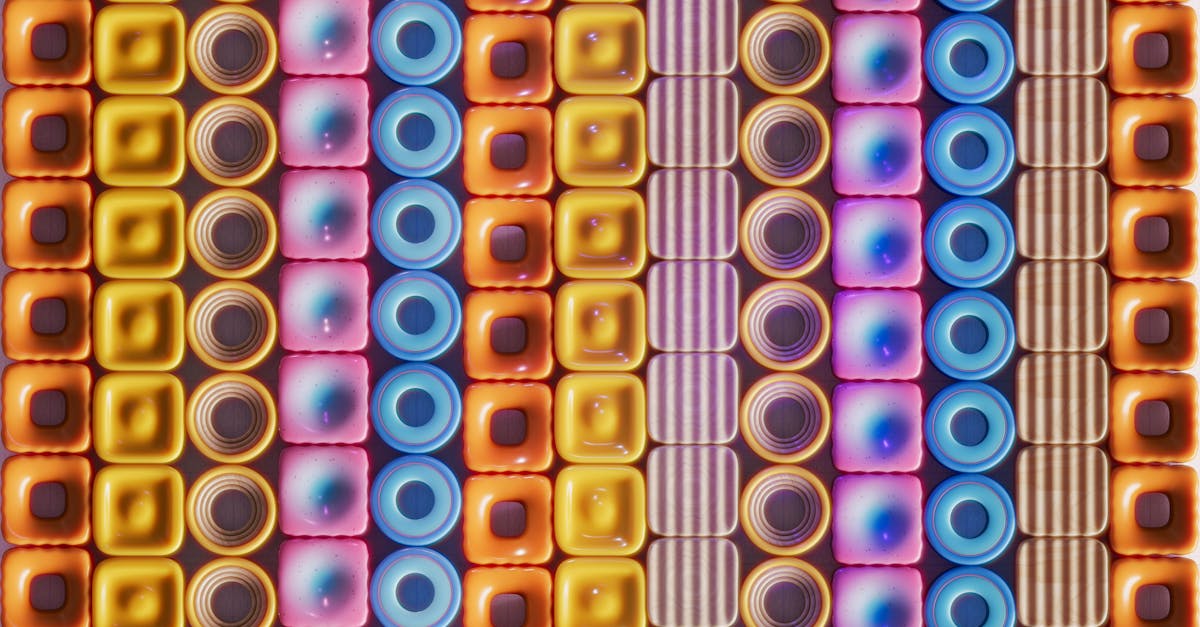
Ducted Split System Installation: Safety and Compliance Requirements
When deciding on the placement of the outdoor unit for a ducted split system, certain guidelines must be followed to ensure optimal performance and safety. Firstly, it is crucial to position the unit at a safe distance from any combustible materials ...
Read more →
Ducted Split System Installation: Final Checks and Handover
During the installation process of a ducted split system, airflow adjustment plays a crucial role in ensuring the system operates efficiently and effectively. It is essential to find the right balance of airflow to guarantee optimal performance throu...
Read more →
Ducted Split System Installation: Ensuring Proper Airflow
Air filters play a critical role in maintaining optimal airflow quality in ducted split systems. Regularly cleaning or replacing air filters is essential to ensure that the system operates efficiently and effectively. Clogged or dirty filters can obs...
Read more →
Commissioning and Start-Up of Ducted Split Systems
When commissioning and starting up ducted split systems, ensuring optimal performance is crucial for long-term efficiency and comfort. Adjusting settings such as airflow, temperature, and fan speed can significantly impact the overall performance of ...
Read more →
Ducted Split System Installation: Connecting the Refrigerant Lines
When it comes to maintaining connected refrigerant lines in a ducted split system, regular upkeep is essential to ensure efficient operation and longevity of the system. One key practice is to visually inspect the refrigerant lines for any signs of w...
Read more →
Inspecting and Testing Ducted Split System Installation
Maintenance of your ducted split system is crucial to ensure its optimal performance and longevity. Regular maintenance will not only keep your system running efficiently but also help in preventing costly repairs down the line. It is recommended to ...
Read more →
Ducted Split System Installation: Wiring and Ductwork
To effectively seal ductwork joints during a ducted split system installation, it is crucial to apply a suitable sealing material that is compatible with the ductwork material. Common options include foil tape, mastic sealant, or heat-activated tape....
Read more →
Ducted Split System Installation: Positioning the Indoor and Outdoor Units
To ensure optimal efficiency of your ducted split system, strategic placement of both the indoor and outdoor units is crucial. The indoor unit should be positioned in a central location within the house to allow for even distribution of air throughou...
Read more →
Steps for Installing Ducted Split Systems
Connecting the ductwork is a critical component of installing ducted split systems in any home or commercial space. Start by carefully connecting the main duct to the air handler, ensuring a secure fit to prevent any leaks. It is important to use the...
Read more →
Planning and Preparing for Ducted Split System Installation
Before commencing the installation of a ducted split system, it is essential to ensure that the designated area is free from any obstructions that may impede the installation process. Begin by removing any furniture, decorations, or objects that may ...
Read more →
Demystifying Ducted Split System Components
Enhancing air quality within your home is crucial for maintaining a healthy living environment. One effective way to achieve this is by incorporating additional features into your ducted split system. By investing in air purifiers, you can significan...
Read more →
Components of Ducted Split Systems Explained
The air distribution mechanism in ducted split systems plays a crucial role in ensuring efficient and effective cooling or heating throughout a space. This system typically involves a network of ducts that are strategically installed to carry the con...
Read more →
A Closer Look at Ducted Split System Components
Air handlers are crucial components in a ducted split system, responsible for circulating the conditioned air throughout the space. They consist of a blower motor that facilitates the movement of air and vents that distribute it effectively. The blow...
Read more →
Essential Parts of Ducted Split Systems
When facing issues with your ducted split system, it is essential to be aware of some common problems that may arise. One frequent issue is inadequate cooling or heating, which can be caused by a clogged air filter or low refrigerant levels. In such ...
Read more →
Diving into Ducted Split System Components
Energy efficiency is a key consideration when it comes to ducted split systems. These systems are designed to provide effective cooling and heating while keeping energy consumption at a minimum. By incorporating energy-efficient components and smart ...
Read more →
Unveiling Ducted Split System Components
Upgrading your ducted split system can significantly enhance the comfort and energy efficiency of your home. By investing in a newer model with advanced features, you can enjoy better temperature control and lower utility bills. Upgraded systems ofte...
Read more →
The Anatomy of Ducted Split Systems
Selecting the appropriate size for your ducted split system is crucial to ensure optimal performance and efficiency. One of the key factors to consider is the size of the space that needs to be cooled or heated. A system that is too small will strugg...
Read more →
Exploring Ducted Split System Components
Filters and air purifiers play a vital role in maintaining the air quality of a ducted split system. Filters are designed to trap dust, pollen, and other airborne particles, preventing them from circulating throughout the system and into indoor space...
Read more →
Key Components of Ducted Split Systems
Ducted split systems are renowned for their energy efficiency features, making them a popular choice for residential and commercial spaces in Australia. One key component that contributes to their efficiency is the inverter technology integrated into...
Read more →
Understanding Ducted Split System Components
Regular maintenance of ducted split system components is essential to ensure optimal performance and longevity of the system. One crucial maintenance tip is to clean or replace the air filters frequently. Clogged filters can restrict airflow, leading...
Read more →
Selecting the Right Capacity for Cassette Type Split Systems
When evaluating sunlight exposure for cassette type air conditioners, it is crucial to consider the orientation of the room in relation to the sun's path throughout the day. Rooms with windows facing east or west are more likely to receive direct sun...
Read more →
Remote Control Options for Cassette Type Split Systems
To maximise the lifespan of your remote control for cassette type split systems, it is essential to handle it with care. Avoid dropping the remote or subjecting it to excessive force, as this can lead to internal damage. Additionally, keep the remote...
Read more →
Noise Reduction Features in Cassette Type Split Systems
When installing a cassette type split system, it is crucial to consider the placement of the indoor unit. The indoor unit should be positioned in a central location within the room to ensure optimal airflow and even distribution of cool or warm air. ...
Read more →
Design Flexibility of Cassette Type Split Systems
Energy-efficient performance is a key feature that sets apart cassette type split systems in the realm of air conditioning. These systems are designed to optimise energy usage, ensuring that cooling or heating needs are met without unnecessary wastag...
Read more →
Comparison of Cassette Type Split Systems with Other Split Systems
Cassette type split systems, when compared to other split systems, demonstrate competitive energy efficiency levels. These systems are designed to efficiently cool or heat spaces, providing users with a cost-effective solution to maintain a comfortab...
Read more →
Energy Efficiency of Cassette Type Split Systems
When considering upgrading to a high-efficiency cassette type split system, homeowners can reap numerous benefits. Firstly, these systems are designed to provide optimal cooling and heating performance while consuming less energy, resulting in reduce...
Read more →
Advantages of Ceiling-mounted Cassette Type Split Systems
Ceiling-mounted cassette type split systems offer easy maintenance, making them a convenient choice for homeowners and businesses alike. The design of these systems allows for quick and simple access to components, reducing the time and effort requir...
Read more →
Maintenance Tips for Cassette Type Split Systems
To ensure optimal performance and energy efficiency of your cassette type split system, it is imperative to regularly monitor the thermostat settings. By keeping a close eye on the temperature settings, you can prevent unnecessary strain on the syste...
Read more →
Benefits of Cassette Type Split Systems in Commercial Buildings
Regular maintenance and swift repairs are essential for ensuring the efficient operation of split systems in commercial buildings. By investing in routine servicing, businesses can prolong the lifespan of their HVAC units and avoid costly breakdowns ...
Read more →
Installation Considerations for Cassette Type Split Systems
Insulation plays a crucial role in maintaining the efficiency of a cassette type split system. Refrigerant lines need to be adequately insulated to prevent heat exchange with the surrounding environment. By minimising heat loss or gain, insulation en...
Read more →
Comparison of Multi-Zone Wall-mounted Split Systems with Other Cooling Options
Multi-zone wall-mounted split systems offer a range of customization options to cater to individual preferences and specific cooling needs. With the ability to control each zone independently, users can adjust the temperature and airflow to create pe...
Read more →
Noise Reduction Features in Multi-Zone Wall-mounted Split Systems
Common noise-related issues can often arise in wall-mounted split systems, causing discomfort and annoyance for users. One prevalent problem is the occurrence of rattling sounds, which can be caused by loose parts within the system or even from exter...
Read more →
Understanding the Zoning Options in Multi-Zone Wall-mounted Split Systems
Zoning systems in multi-zone wall-mounted split systems can encounter common issues that may impact their performance. One prevalent problem is temperature discrepancies between different zones, which can result from factors such as improper thermost...
Read more →
Selecting the Right Indoor Units for Multi-Zone Wall-mounted Split Systems
When selecting indoor units for multi-zone wall-mounted split systems, it is important to consider the customizable features available. These features can enhance the overall performance and user experience of the system. Look for units that offer cu...
Read more →
Benefits of Inverter Technology in Multi-Zone Wall-mounted Split Systems
One of the standout advantages of multi-zone wall-mounted split systems featuring inverter technology is their quick and simple installation process. Unlike traditional setups that can be cumbersome and time-consuming, these systems are designed to b...
Read more →
Sizing Considerations for Multi-Zone Wall-mounted Split Systems
In the realm of HVAC systems, adjusting sizing for different climate zones is a crucial consideration that can significantly impact the performance and efficiency of multi-zone wall-mounted split systems. Climate variations across different regions n...
Read more →
Maintenance Guide for Multi-Zone Wall-mounted Split Systems
To maintain optimal performance of your multi-zone wall-mounted split system, regularly checking the refrigerant levels is crucial. Insufficient refrigerant can lead to poor cooling efficiency and potential damage to the system. To ascertain the refr...
Read more →
Advantages of Multi-Zone Wall-mounted Split Systems
Multi-zone wall-mounted split systems offer a significant advantage in providing flexible temperature control throughout different areas of a home or office. This feature allows users to set independent temperature preferences for each zone, ensuring...
Read more →
Installation Tips for Multi-Zone Wall-mounted Split Systems
Once you have chosen the ideal location for the outdoor unit of your multi-zone wall-mounted split system, it's crucial to ensure that the site provides sufficient clearance for proper ventilation. Adequate airflow around the unit is essential for op...
Read more →
Energy Efficiency of Multi-Zone Wall-mounted Split Systems
Energy saving techniques play a crucial role in optimising the efficiency of multi-zone wall-mounted split systems. Users can adopt various practices to ensure that their systems operate in a manner that is both energy-efficient and cost-effective. O...
Read more →
Smart Technology Integration with Single-Zone Wall-mounted Split Systems
Once you have selected the smart technology system that suits your needs, the installation process can begin. Begin by ensuring that the power to the split system is turned off at the main electrical switchboard to avoid any electrical mishaps during...
Read more →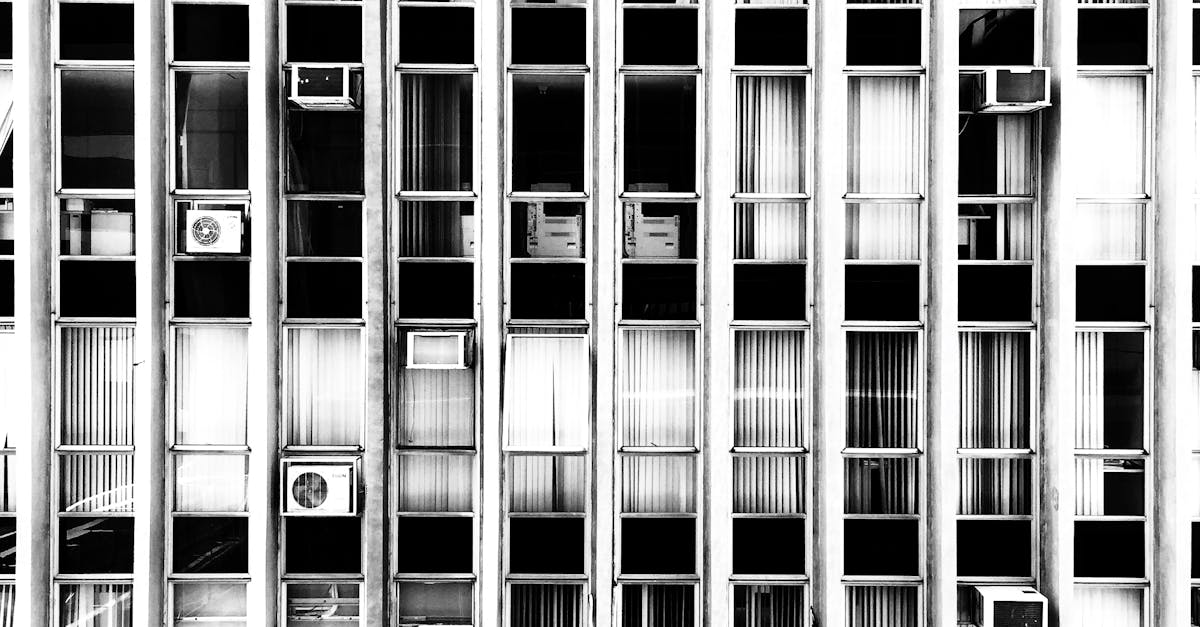
Troubleshooting Common Issues with Single-Zone Wall-mounted Split Systems
Temperature fluctuations in a single-zone wall-mounted split system can be a common issue that many homeowners face. When experiencing fluctuations in temperature, the first step is to check the thermostat settings to ensure they are correctly set to...
Read more →
Enhancing Indoor Air Quality with Single-Zone Wall-mounted Split Systems
When installing wall-mounted split systems for enhanced indoor air quality, it is imperative to carefully choose the optimal location on the wall. The chosen spot should allow for maximum airflow while minimizing obstructions such as furniture or cur...
Read more →
Upgrading to Single-Zone Wall-mounted Split Systems
When encountering common issues with your single-zone wall-mounted split system, it's essential to perform basic troubleshooting to identify and resolve the problem promptly. One frequent problem is inadequate cooling or heating, often caused by clog...
Read more →
Comparison of Single-Zone Wall-mounted Split Systems with Other Types
When comparing wall-mounted split systems with multi-zone mini-split systems, it's essential to consider factors such as zoning flexibility and temperature control. Wall-mounted split systems are designed to cool or heat a single room efficiently, pr...
Read more →
Choosing the Right Size for Single-Zone Wall-mounted Split Systems
When selecting a single-zone wall-mounted split system, one of the most crucial factors to consider is the British Thermal Units (BTU) requirement for the room where the system will be installed. BTU is a unit of measurement that indicates the amount...
Read more →
Maintenance Guide for Single-Zone Wall-mounted Split Systems
To detect refrigerant leaks in a single-zone wall-mounted split system, you must first turn off the unit and allow it to sit for a while to stabilize pressure levels within the system. Once the unit has been off for sufficient time, carefully inspect...
Read more →
Energy Efficiency of Single-Zone Wall-mounted Split Systems
When assessing the efficiency of single-zone wall-mounted split systems, common issues that may arise include improper installation and poor maintenance practices. These systems require precise installation to ensure optimal performance, including pr...
Read more →
Installation Tips for Single-Zone Wall-mounted Split Systems
To ensure the efficient operation of your single-zone wall-mounted split system, testing and commissioning are crucial steps that should not be overlooked. Once the installation process is complete, the system needs to be thoroughly tested to verify ...
Read more →
Advantages of Single-Zone Wall-mounted Split Systems
Single-zone wall-mounted split systems offer a quiet operation that is highly desirable in both residential and commercial spaces. The indoor unit's noise level is kept to a minimum, providing a peaceful and comfortable environment without any distra...
Read more →
Upgrading to Non-Inverter Ducted Split Systems: What to Consider
Non-inverter ducted split systems are a popular choice for many households due to their affordability and reliability. However, like all air conditioning systems, they require regular maintenance to ensure optimal performance and longevity. One of th...
Read more →
Cost Analysis of Non-Inverter Ducted Split Systems
Factors influencing the installation costs of non-inverter ducted split systems are multifaceted. The size and layout of the property play a significant role in determining the complexity of the installation process. Larger properties may require mor...
Read more →
Troubleshooting Common Issues with Non-Inverter Ducted Split Systems
When facing power supply issues with your non-inverter ducted split system, the first step is to check the power source. Ensure that the system is properly plugged in and the power switch is turned on. Sometimes, the power outlet itself may be faulty...
Read more →
Selecting the Right Size for Non-Inverter Ducted Split Systems
When selecting a non-inverter ducted split system, one crucial aspect to consider is the noise level produced by different models. Noise levels can vary significantly between units, impacting the comfort and quietness of your space. Before making a p...
Read more →
Energy Efficiency of Non-Inverter Ducted Split Systems
Non-inverter ducted split systems have made significant advancements in energy efficiency compared to traditional air conditioning systems. These modern systems are designed to adjust the cooling output based on the current temperature needs, resulti...
Read more →
Maintenance Tips for Non-Inverter Ducted Split Systems
One crucial aspect of maintenance for non-inverter ducted split systems is checking the refrigerant levels regularly. Having the correct level of refrigerant is essential for the system to operate efficiently and provide optimal cooling or heating. L...
Read more →
Comparison of Non-Inverter Ducted Split Systems with Other Cooling Systems
Maintenance requirements for non-inverter ducted split systems are relatively straightforward compared to other cooling systems. Regular cleaning of the filters and coils is essential to ensure optimal performance and efficiency. This task can typica...
Read more →
Understanding the Technology Behind Non-Inverter Ducted Split Systems
Non-inverter ducted split systems are versatile cooling and heating solutions that offer exceptional performance in various applications. They are particularly well-suited for large residential properties, commercial buildings, and office spaces wher...
Read more →
Installation Process for Non-Inverter Ducted Split Systems
To connect the ductwork in a non-inverter ducted split system, begin by carefully aligning the duct sections before securing them together. Ensure that the joints are tight and properly sealed to prevent any air leakage. Use appropriate fasteners and...
Read more →
Zoning Options for Inverter Ducted Split Systems
When encountering issues with zoning systems for inverter ducted split systems, the first step is to ensure that all zones are correctly set up and configured. Check the thermostat settings for each zone to confirm that they are functioning as intend...
Read more →
Advantages of Non-Inverter Ducted Split Systems
When it comes to non-inverter ducted split systems, one of the key advantages is the ease of maintenance they offer. These systems typically require less maintenance compared to traditional air conditioning units, making them a convenient choice for ...
Read more →
Long-Term Cost Savings with Inverter Ducted Split Systems
Inverter ducted split systems are renowned for their exceptional longevity compared to traditional air conditioning units. The innovative technology within these systems allows for smoother operation with fewer sudden spikes in power usage, ultimatel...
Read more →
Comparing Inverter Ducted Split Systems with Non-Inverter Systems
When comparing inverter ducted split systems with non-inverter systems, one important aspect to consider is the noise levels produced by each system during operation. Inverter ducted split systems are known for their quieter performance compared to n...
Read more →
Noise Reduction Features in Inverter Ducted Split Systems
Inverter ducted split systems provide homeowners with a tranquil cooling experience by operating quietly and efficiently. These systems are designed to deliver a peaceful environment throughout the home while maintaining the desired temperature level...
Read more →
Maintenance Tips for Inverter Ducted Split Systems
Scheduling professional maintenance for your inverter ducted split system is crucial to ensure optimal performance and longevity of your unit. By booking an annual maintenance service with a qualified technician, you can address any potential issues ...
Read more →
Understanding the Technology behind Inverter Ducted Split Systems
Inverter ducted split systems have gained popularity in recent years due to their superior energy efficiency compared to non-inverter systems. The main difference lies in how the compressor operates: while non-inverter systems have a fixed-speed comp...
Read more →
Choosing the Right Size for an Inverter Ducted Split System
Energy efficiency ratings play a pivotal role in determining the performance and cost-effectiveness of inverter ducted split systems. When selecting the appropriate size for your system, it is crucial to consider its energy efficiency rating to ensur...
Read more →
Installation Considerations for Inverter Ducted Split Systems
When installing inverter ducted split systems, proper consideration must be given to the piping and tubing installation. It is crucial to ensure that the refrigerant pipes are correctly sized and insulated to prevent energy loss and maintain system e...
Read more →
Energy Efficiency of Inverter Ducted Split Systems
Inverter technology plays a crucial role in enhancing the energy efficiency of ducted split systems, allowing for precise climate control in residential and commercial settings. By using variable-speed compressors, these systems can adjust their outp...
Read more →
Advantages of Inverter Ducted Split Systems
Inverter ducted split systems offer a space-saving design that is highly beneficial for homes and businesses alike. By utilising a compact indoor unit that is typically installed in the ceiling or under the floor, these systems maximise the available...
Read more →